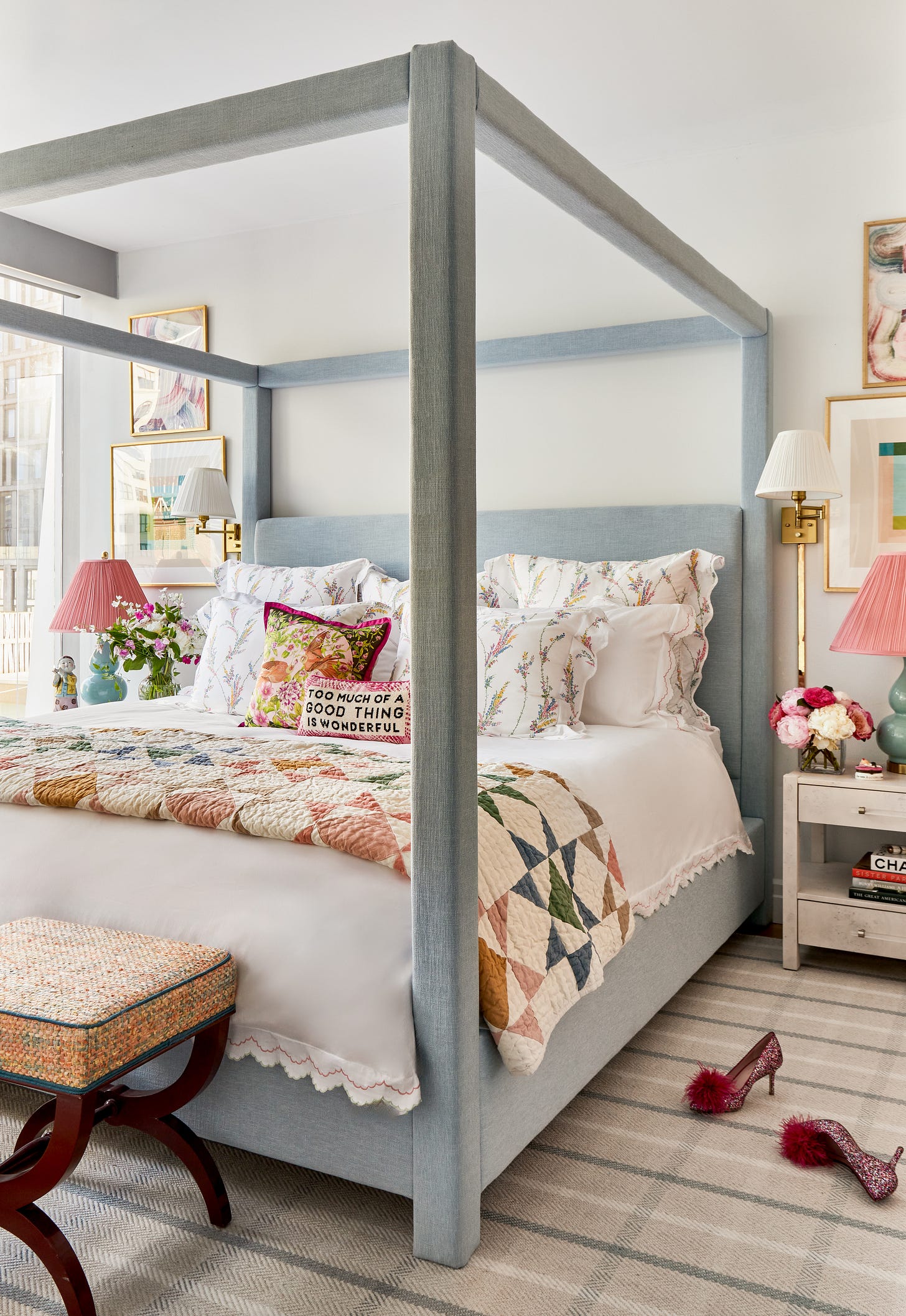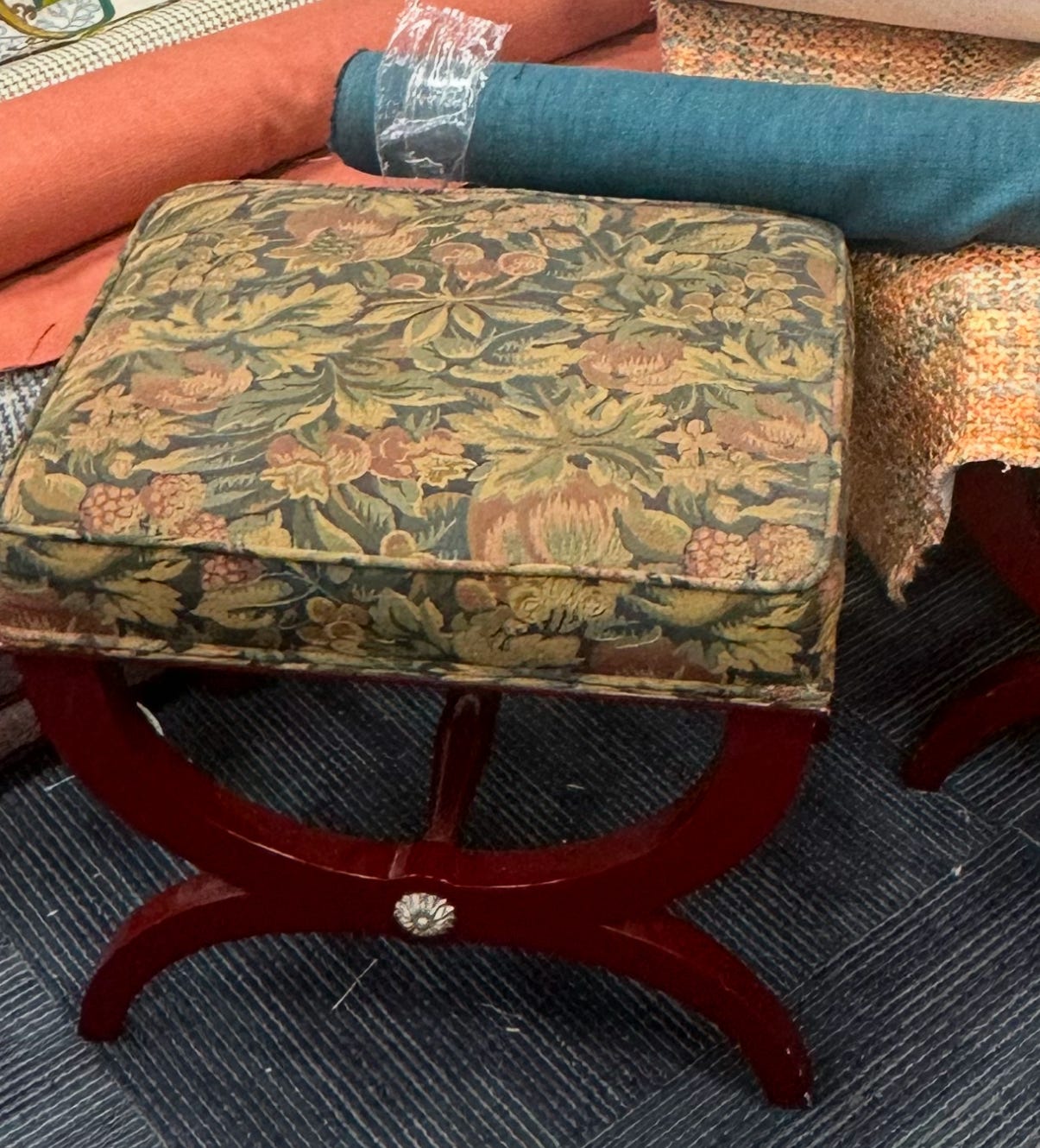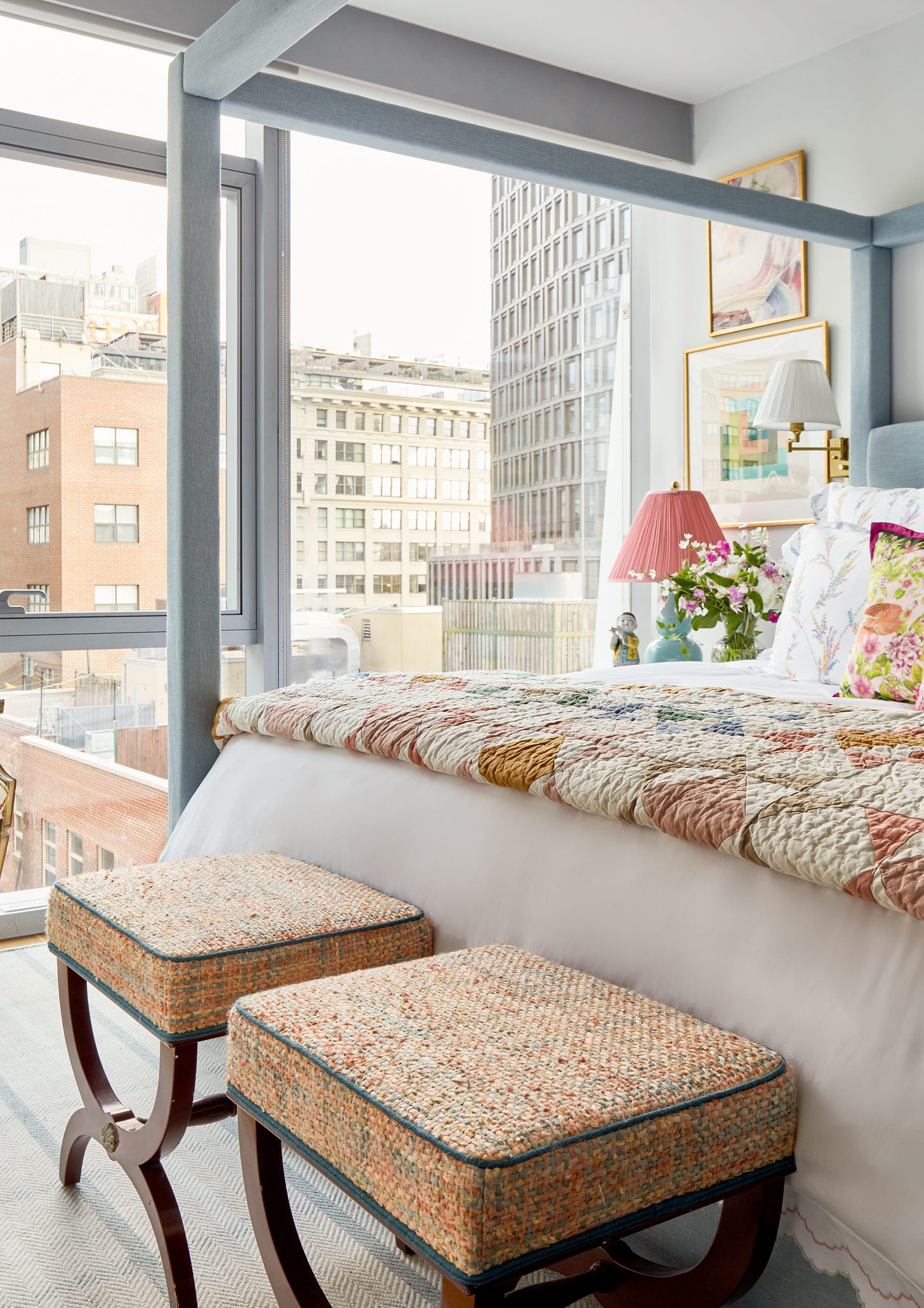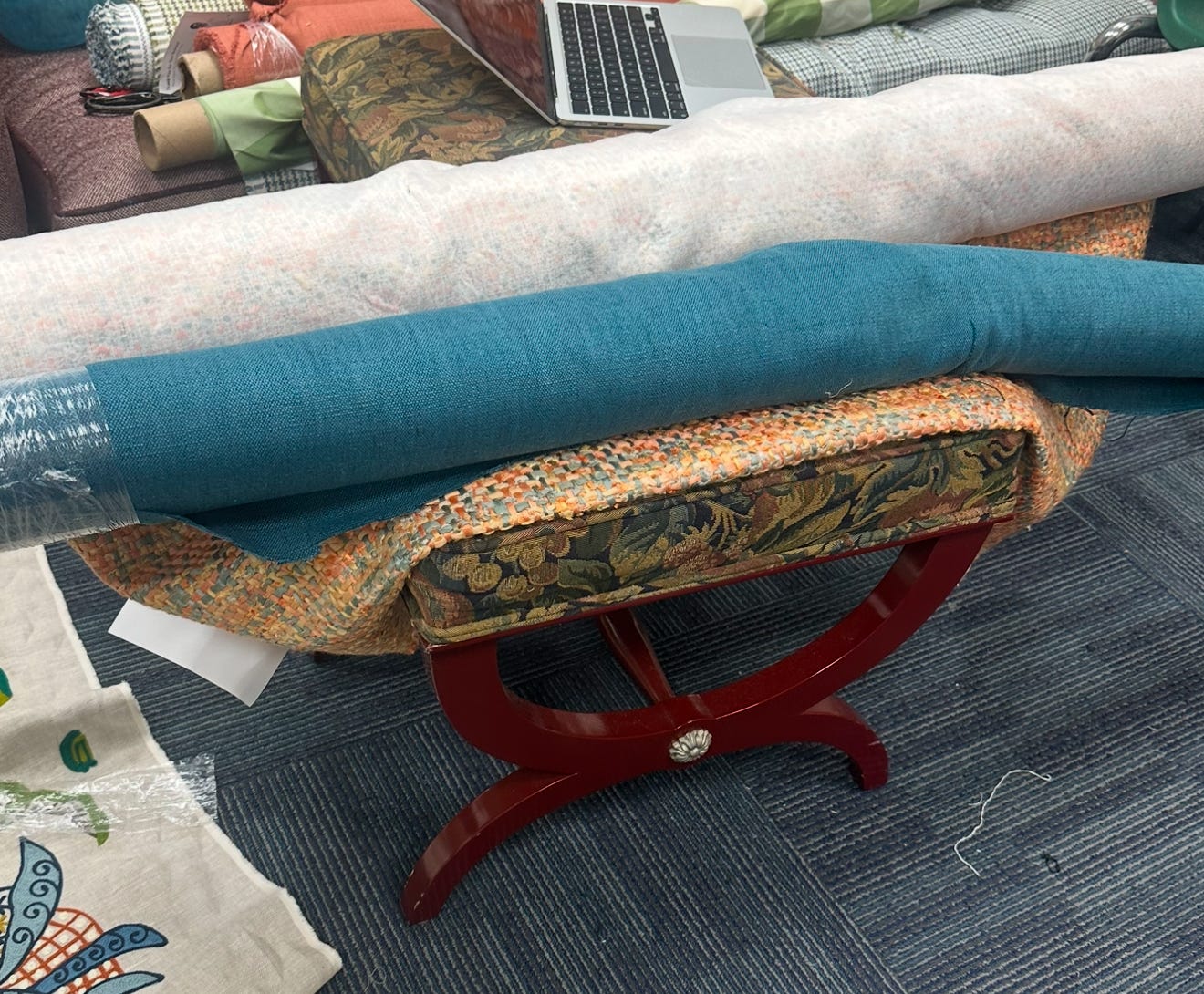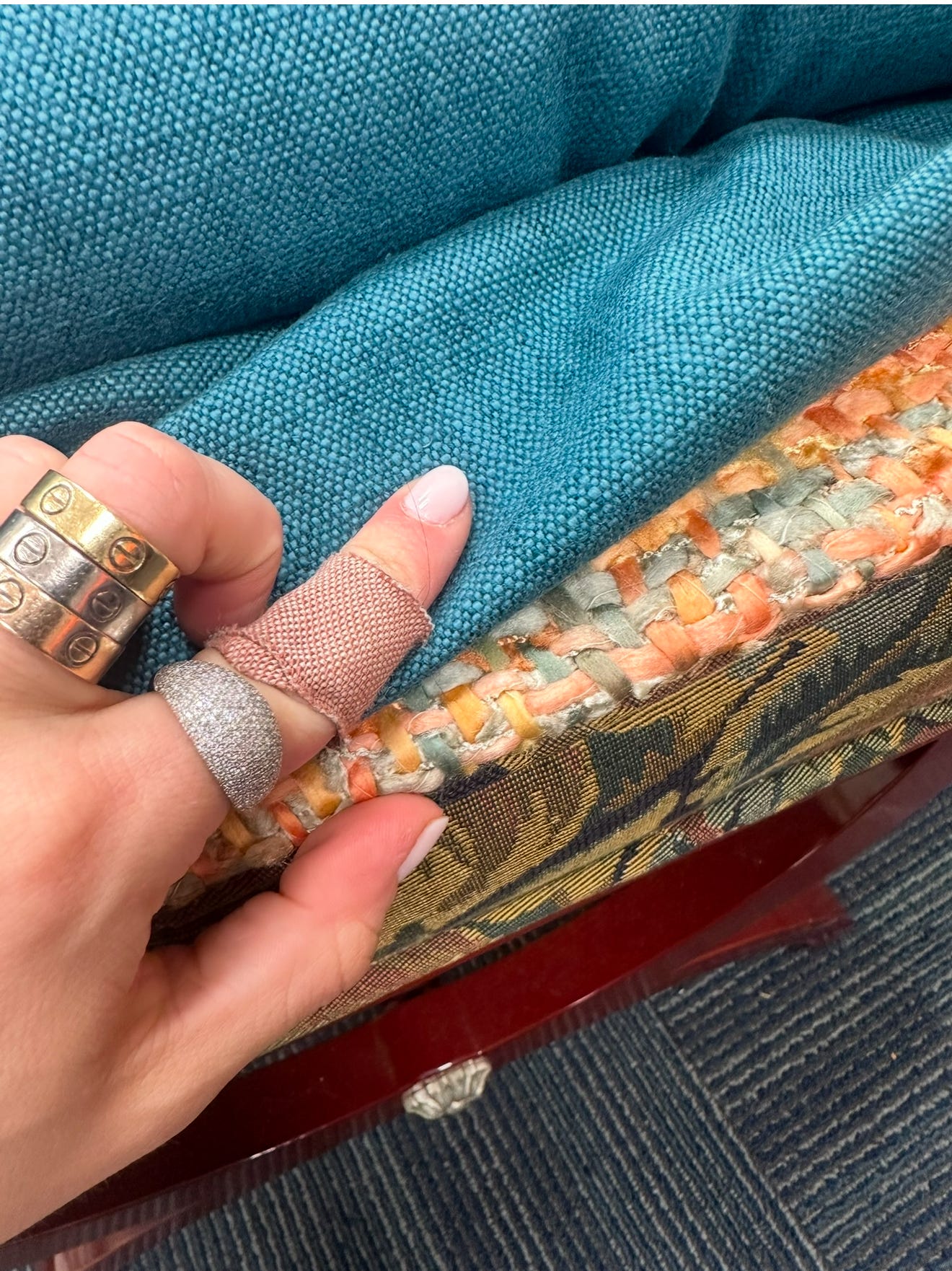A Call to Reupholster Your Furniture
I promise the result will be far more exciting and unique than anything you'd find on a showroom floor (plus tips & tricks for your reupholstery journey!).
Reupholstering furniture has become something of my calling card. But let me tell you, there are days when I’m deep in the trenches, writing work orders, coordinating quote requests, and communicating with my workrooms, where I daydream about being the type of designer who simply buys upholstered case goods straight off the floor. Alas, that’s a pipe dream—I am, unapologetically, difficult (I mean the piece below from a previous project had quite literally 2 fabrics and 3 trims!). I just want custom upholstery (so shoot me!).
^Deck fabric & welting courtesy of Anna Elisabeth!
When it comes to my projects, I am always an advocate for reusing existing pieces—provided they work within the design and are high enough quality to warrant the effort. Trust me, we’re not going to jeopardize the integrity of the design with a subpar piece, nor will we waste time on something that will fall apart the second we strip the fabric off. Here’s a little secret: older furniture is often of significantly higher quality than much of what’s manufactured today. (Raise your hand if you read that article about how terrible some of the new inexpensive sofas are!)
So, what do I look for in furniture worth reupholstering? Brands like Baker or pieces produced in High Point, NC, are always a good bet (and a little history lesson on High Point here lol). I’m hunting for hand-tied springs, kiln-dried wood, and American-made craftsmanship—the kind of stuff that’s built to last. While High Point manufactures a lot of the to-the-trade furniture I swear by, if I can’t get my hands on something new, I turn to secondhand pieces and pair them with a fresh upholstery job.
When I was designing my DUMBO apartment, I knew I wanted to work with many of the Anna Elisabeth fabrics I had seen sourcing when it came to my reupholstery projects. Not only is their product exceptional, but their mission resonates with me deeply. Anna Elisabeth is ‘a woman-owned, operated, and managed company, which empowers women to build relationships, lift each other up, and collaborate creatively.’ As someone who values these principles in my own work, it was a natural fit (if you are not familiar with Anna Elisabeth- look them up- great product, great ethos, and a great price point).
For this project, I was definitely under some budgetary constraints (my accountant Ariel will tell you, I am not a fan of the word budget with both myself AND my clients). Therefore I turned to secondhand furniture knowing full well I could work some reupholstery magic. Enter Kaiyo—a now-defunct but absolutely legendary secondhand marketplace (pouring one out for you Kaiyo!). I managed to source several incredible pieces, including two matching X-benches with exposed bases in an oxblood-red shade. These benches had great bones and were destined for reupholstery from the second I laid eyes on them.
When it came to reupholstering these pieces, the Anna Elisabeth fabric I selected (S6704 Sunkist) for the X-benches was perfect, as it transitioned seamlessly between both rooms (living and primary bedroom) with a cohesive color palette of reds, corals, blues, and more. Additionally, the texture reminded me so much of a tweedy Chanel jacket—absolutely sublime.
Originally, the X-benches were destined for the living room, but they eventually found their home at the end of the bed in the primary bedroom (here is the before!):
By adding a contrasting welting in a teal (a single welting on the top and a double welting on the bottom), I tied in the color from the artwork in the bedroom. The color palette between the two rooms is so tight that many elements are interchangeable, creating a harmonious flow throughout the space.
A sidenote: Just for the record, X-benches are some of my favorite small upholstered pieces to add into any space. You name it—I love it. What’s so amazing about them is how interchangeable they can be and how they can add such a great impact visually while also providing extra seating or a place to rest some books. So think about that the next time you are designing a space—some of my favorites are from Etsy, The Inside, and Jonathan Adler!
Now, enough about me and my stools—let’s talk upholstery tips and tricks. Of course, the cornerstone of great upholstery is having a great fabric (cue Anna Elisabeth Sunkist). However, if you’re thinking about diving into the world of custom upholstery, here’s what else you need to know:
My Upholstery Tips:
Vet Your Upholsterer: Ask around for recommendations and check out examples of their work. Look for precision in pattern matching, straight nailheads, and invisible seams. If you’re asking a designer for advice, be mindful that many workrooms are to-the-trade only, and we guard them fiercely—they’re our bread and butter.
Understand What You Want: Do your homework on industry terms. Know what a welt is (single or double), whether you prefer a gimp, or if nailheads are a must—and if so, what finish you’re after (French natural, anyone?). Don’t worry, I’ll break all of this down in a future Substack.
Know Your Fabric: Provide your upholsterer with the fabric’s repeat (both vertical and horizontal) and its width (not all fabric is 54”). Never assume that a small repeat means less yardage is needed. Pattern repeats significantly impact yardage requirements, and nothing frustrates an upholsterer more than running out of fabric mid-project.
Clarify the Scope of Work: Discuss internal work upfront and ensure it’s included in the price. Foam replacement or other internal fixes aren’t always standard, so if it’s not in the quote, it’s not happening. Foam isn’t cheap, but it’s worth investing in to ensure the piece is done right.
Reupholstery may be a labor of love, but the results speak for themselves. There’s nothing more satisfying than transforming a tired piece of furniture into a custom creation that feels like it was always meant to be part of the space. So, next time you’re considering new furniture, take a moment to see the potential in what’s already there. You might just surprise yourself.
xx,
Hollis







